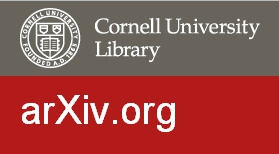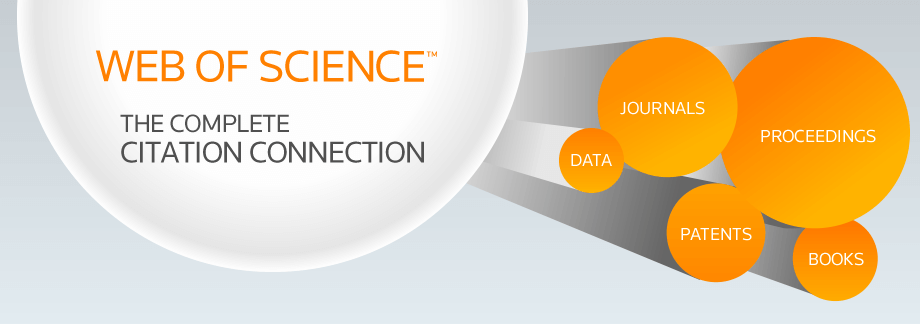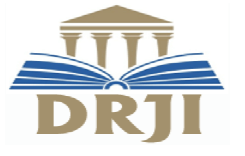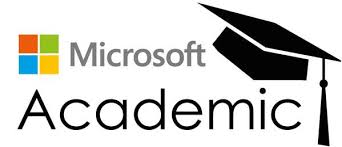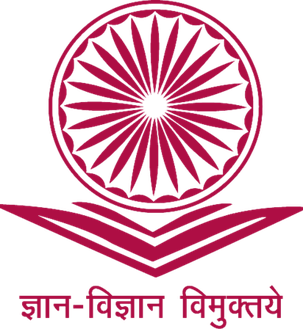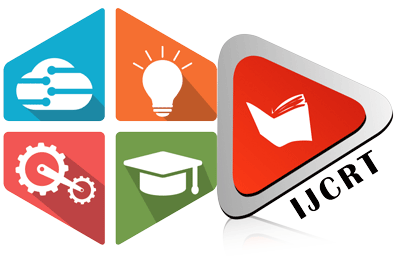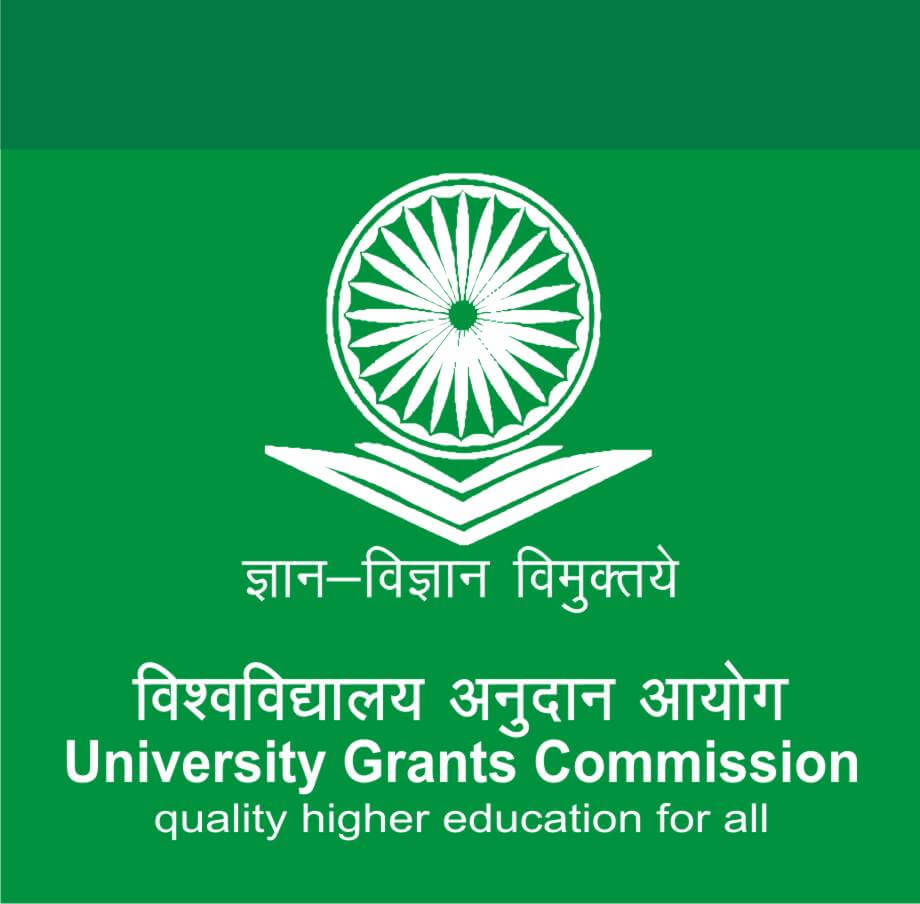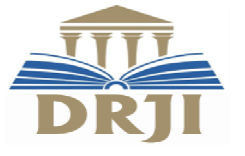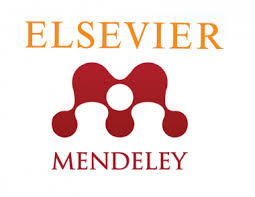INTERNATIONAL JOURNAL OF CREATIVE RESEARCH THOUGHTS - IJCRT (IJCRT.ORG)
International Peer Reviewed & Refereed Journals, Open Access Journal
IJCRT Peer-Reviewed (Refereed) Journal as Per New UGC Rules.
ISSN Approved Journal No: 2320-2882 | Impact factor: 7.97 | ESTD Year: 2013
Call For Paper - Volume 13 | Issue 10 | Month- October 2025
Scholarly open access journals, Peer-reviewed, and Refereed Journals, Impact factor 7.97 (Calculate by google scholar and Semantic Scholar | AI-Powered Research Tool) , Multidisciplinary, Monthly, Indexing in all major database & Metadata, Citation Generator, Digital Object Identifier(CrossRef DOI)
Contact Us Click Here
WhatsApp Contact Click Here
Volume 12 | Issue 3
| IJCRT Journal front page | IJCRT Journal Back Page |
Paper Title: The Dialectic of Protectionist Measures and TRIMs: Navigating the Complexities of Global Trade
Publisher Journal Name: IJCRT
Your Paper Publication Details:
Published Paper ID: - IJCRT24A3339
Register Paper ID - 254719
Title: THE DIALECTIC OF PROTECTIONIST MEASURES AND TRIMS: NAVIGATING THE COMPLEXITIES OF GLOBAL TRADE
Author Name(s): Ashwini Bhat A
Publisher Journal name: IJCRT
Volume: 12
Issue: 3
Pages: l350-l355
Year: March 2024
Downloads: 199
Abstract
Abstract: In the intricate realm of global commerce, nations constantly seek an equilibrium between fostering their domestic industries and adhering to international trade obligations. The Agreement on Trade-Related Investment Measures (TRIMs) , established under the auspices of the World Trade Organization (WTO), aims to curtail investment policies that can distort trade. Yet, protectionist measures, driven by national economic interests, often stand at odds with the principles of TRIMs. This paper dives into the dialectical relationship between these protectionist measures and the TRIMs Agreement, unravelling the complexities they introduce to the global trade landscape. Protectionist measures, encompassing a range of policies from tariffs to subsidies to quotas, primarily serve to shield domestic industries from external competition. These measures, often borne out of economic nationalism or strategic interests, have seen a resurgence in recent years, especially amidst geopolitical tensions and global economic uncertainties. On the other hand, the TRIMs Agreement, grounded in the principles of the General Agreement on Tariffs and Trade (GATT) 1994, particularly the notions of national treatment and the prohibition of quantitative restrictions, endeavours to ensure that domestic regulations do not discriminate against or hinder foreign products in favour of domestic ones. A central challenge arises when nations, in their pursuit of economic self-reliance or geopolitical strategies, implement measures that arguably contradict the TRIMs Agreement. Instances include local content requirements or trade-balancing measures that ostensibly prioritize domestic products or production processes. Such measures, while beneficial for domestic economic agendas, risk contravening the TRIMs Agreement and souring trade relations. However, the dialectical tension isn't solely adversarial. On occasions, the interplay between TRIMs and protectionist measures has fostered creative policymaking, where countries craft policies that uphold the spirit of free trade while strategically advancing their economic interests. For instance, nations might leverage investment incentives, which fall outside the direct purview of TRIMs, to achieve similar objectives to direct protectionist measures without overtly flouting WTO rules. In conclusion, the dance between protectionist tendencies and the TRIMs Agreement paints a vivid picture of the ongoing evolution of global trade. While conflicts between national interests and multilateral commitments are inevitable, understanding this dialectic is crucial. It informs policymakers' decisions, aids businesses in strategizing their international ventures, and shapes the trajectory of the international trade regime. Future discourse should focus on finding pathways that reconcile these divergent pulls, ensuring that global trade remains both equitable and robust.
Licence: creative commons attribution 4.0
License
Keywords
Protectionism, Trade-Related Investment Measures (TRIMs), Free Trade, Global Economy
License
Paper Title: A Study on Occupational Stress and coping strategies of Stress Management in Banking sector in Sayan village and nearby area
Publisher Journal Name: IJCRT
Your Paper Publication Details:
Published Paper ID: - IJCRT24A3338
Register Paper ID - 254857
Title: A STUDY ON OCCUPATIONAL STRESS AND COPING STRATEGIES OF STRESS MANAGEMENT IN BANKING SECTOR IN SAYAN VILLAGE AND NEARBY AREA
Author Name(s): Krupali Prajapati, Dr. Payal Mahida
Publisher Journal name: IJCRT
Volume: 12
Issue: 3
Pages: l336-l349
Year: March 2024
Downloads: 176
Abstract
For banking employees around the world, stress on the job can be a challenge. Stress can be a positive and negative. Positive stress can be leads to a productivity and negative stress can be leads to a loss for the organization. There is already certain level of stress in bank employees. Stress arising from the work pressure that bank employees facing on the job. Many employees cannot cope up with rapid changes taking place in the jobs. Work load, high level of responsibility, work policies and practices, Role conflict, service for customer, rapid technological change, target achievement, lack of customer response is the great transaction of stress of bank employees. The objective of this research paper is to understand the roots and outcomes of this job. Stress on employee performance in banking sector and coping strategies to reduce the job stress in the banking employees.
Licence: creative commons attribution 4.0
License
Keywords
Banking Sector, Occupational Stress, Banking Employees, Coping Strategies, Stress Management
License
Paper Title: Study of Geometrical Configuration of Water Droplets
Publisher Journal Name: IJCRT
Your Paper Publication Details:
Published Paper ID: - IJCRT24A3337
Register Paper ID - 254808
Title: STUDY OF GEOMETRICAL CONFIGURATION OF WATER DROPLETS
Author Name(s): Muntaha Kaz, Swati Singh Rana, Asha Bi, Mohd. Akram
Publisher Journal name: IJCRT
Volume: 12
Issue: 3
Pages: l323-l335
Year: March 2024
Downloads: 185
Abstract
This research paper delves into the multifaceted realm of droplets, exploring their dynamic behaviour, diverse applications, and profound implications across various disciplines. The study begins by unravelling the intricate physics of droplet formation, considering fundamental factors such as surface tension, viscosity, and temperature. Investigating the biological landscape, the role of droplets in cellular processes and medical applications, such as drug delivery, is scrutinized. The atmospheric sciences section explores the formation of cloud droplets and rain, shedding light on the intricate interplay of aerosol particles and droplet dynamics. Microfluidics and lab-on-a-chip devices are gaining significant attention due to the pivotal role played by droplets in advancing healthcare, chemistry, and biology applications. From their impact on material properties to their relevance in energy harvesting and space environments, research in this field spans various frontiers of scientific and technological innovation. Additionally, studies are investigating droplet size analysis methods and their applications in industrial processes and environmental studies. As the paper progresses, it sheds light on the diverse contributions of droplets to fields such as food science, where they are integral to processes like emulsification, encapsulation, and the development of unique textures. The utilization of acoustic levitation to manipulate and control droplets presents intriguing possibilities in chemistry, physics, and medicine. Lastly, the paper delves into the intersection of droplets and environmental pollution, exploring the intricate ways in which droplets contribute to the transport and dispersion of pollutants in the atmosphere and water bodies. In summary, this research paper offers a comprehensive exploration of droplets, providing a nuanced understanding of their dynamics, applications, and broader implications in the realms of science and technology.
Licence: creative commons attribution 4.0
License
Keywords
"Droplets","Dynamic behavior","Surface tension", "Viscosity","Biological landscape","Cellular processes","Aerosol","Emulsification","Encapsulation","Textures","Acoustic levitation".
License
Paper Title: "Unlocking the Potential: Dietary Flavonoids as Cytotoxic Agents in Human Cancer Therapy"
Publisher Journal Name: IJCRT
Your Paper Publication Details:
Published Paper ID: - IJCRT24A3336
Register Paper ID - 254800
Title: "UNLOCKING THE POTENTIAL: DIETARY FLAVONOIDS AS CYTOTOXIC AGENTS IN HUMAN CANCER THERAPY"
Author Name(s): Ms.Shaikh Riba Jakir Husain, Ms.Pratiksha R Pawar
Publisher Journal name: IJCRT
Volume: 12
Issue: 3
Pages: l307-l322
Year: March 2024
Downloads: 177
Abstract
Flavonoids, which are widely present in nature and our food, play a critical role in how our diet can help protect against diseases like cancer. The ability of these polyphenols to fight cancer hang on on variousParameters, such as their concentration, chemical structure with the specific type of cancer involved. Different types of cancer cells react differently to flavonoids, depending on the tissue they originate from. This study focuses on the most commonly consumed dietary flavonoids and their potential effects on various human cancers. For instance, apigenin, chrysin, and luteolin show promising potential as powerful anti-cancer agents for cervical cancer. When it comes to cancers originating from the liver and colon, where flavonoids are primarily metabolized, there are notable variations in their effectiveness against cancer cells. In the case of gastric cancer, kaempferol emerges as a hopeful candidate, while luteolin shows promise for treating ovarian cancer. These findings shed light on how specific flavonoids in our diets could have significant impacts on different forms of cancer.
Licence: creative commons attribution 4.0
License
Keywords
Flavonids,Cancer, Thearpy, Flavonoids Biosynthesis , Anti Cancer activity , Oxidative Stress , Cancer stem call.
License
Paper Title: Historical Perspectives on the Medieval Educational System
Publisher Journal Name: IJCRT
Your Paper Publication Details:
Published Paper ID: - IJCRT24A3335
Register Paper ID - 254806
Title: HISTORICAL PERSPECTIVES ON THE MEDIEVAL EDUCATIONAL SYSTEM
Author Name(s): Dr. G. Prathap, Dr. P. Subramanyam
Publisher Journal name: IJCRT
Volume: 12
Issue: 3
Pages: l300-l306
Year: March 2024
Downloads: 243
Abstract
This research article aims to provide readers with a knowledge of medieval schooling. The Muslim educational system predominated during the Middle Ages. During this time, changes were implemented in the educational system. People started to realize how important education was during this time, and some even started enrolling in universities. Madrasas provided higher education, while maktabs provided primary instruction. New and cutting-edge techniques and approaches were introduced to the processes of teaching and learning. The maktabs were the organizations that offered instruction in schools. Madrasas, on the other hand, were organizations that offered higher education. While the madrasas were maintained by the kings and nobles, the maktabs were typically funded by donations from the general populace. There were six distinct categories of institutions: those run by the kings and nobility; those founded by lone scholars with grants and assistance from the government; those connected to mosques; those connected to tombs; those started by lone scholars; and those connected to Sufi hospices. Famous madrasas included the Abu Fazl madrasa in Fatehpur Sikri, Mohammed Gawani's madrasa in Bidar, and the Muizzi, Nasiri, and Firuzi madrasas in Delhi. It was the way the text of the Quran was recited, punctuated, spoken, and so on. The Muslim educational system predominated throughout this one. Although education was theoretically accessible to all, it was largely restricted to a few group of people in medieval India who were involved in the administration of transmission. One of the most amazing developments in world history is the advent of Mohammedanism. With the advent of Mohammedanism, India's entire history was altered. Invasion of India by the Mohammedans began at the start of the ninth century A.D. The majority of the nation's new institutions, traditions, and customs were brought about by the Turks and Arabs. Among this, the Islamic educational system stood out as one of the most notable since it differed significantly from both the Buddhist and Brahmanic systems. The primary goals of education were the spread of Islam, the expansion of knowledge, and religious education. Patronage of the ruling class, lack of state control, the importance of religion and vocational training, adhering to norms and regulations, the relationship between teachers and students, individualized attention, educated teachers, discipline, and teaching support are some of the characteristics of education. It makes sense that the educational system in medieval India underwent several adjustments and modifications.
Licence: creative commons attribution 4.0
License
Keywords
predominated,institutions, traditions, Dharma, Indian culture, curriculum and teaching practices
License
Paper Title: Review Article : Clinical Research and Clinical Trials
Publisher Journal Name: IJCRT
Your Paper Publication Details:
Published Paper ID: - IJCRT24A3334
Register Paper ID - 254815
Title: REVIEW ARTICLE : CLINICAL RESEARCH AND CLINICAL TRIALS
Author Name(s): Aher Shailendra, Momin Mohammad Sajid, Mahankale Pratik, Momin Furkan
Publisher Journal name: IJCRT
Volume: 12
Issue: 3
Pages: l286-l299
Year: March 2024
Downloads: 239
Abstract
An alternate word for medical research is clinical research. Clinical research is done on human subjects and is typically done to assess a therapeutic drug's, a medical or surgical procedure's, or a device's effectiveness in treating or managing a patient. Additionally, clinical research can refer to any study that assesses the aetiology, symptoms, risk factors, and other aspects of a disease. Clinical trials, on the other hand, are research projects that evaluate a therapeutic medicine or device's potential for illness management, control, and prevention. The emphasis on clinical research becomes even more crucial in light of the rising rates of both communicable and non-communicable diseases, particularly in light of the impact that COVID-19 has had on public health globally. Understanding clinical research can help in the development of medications, equipment, and vaccines, which will enhance readiness for public health emergencies. Thus, we provide a thorough description of the essential components of clinical research in this study, which includes the phases, kinds, and designs of clinical trials as well as their operations, audit, and management, as well as ethical considerations.
Licence: creative commons attribution 4.0
License
Keywords
clinical trials, therapeutic drug, efficacy, ethical concerns, audit, medical research, clinical research
License
Paper Title: Agyeya's thoughts in the story "Gangrene"
Publisher Journal Name: IJCRT
Your Paper Publication Details:
Published Paper ID: - IJCRT24A3333
Register Paper ID - 254736
Title: AGYEYA'S THOUGHTS IN THE STORY "GANGRENE"
Author Name(s): Bhagyashree Sahoo
Publisher Journal name: IJCRT
Volume: 12
Issue: 3
Pages: l282-l285
Year: March 2024
Downloads: 221
Abstract
The basic sentiment of the story "Gangrene" is towards the woman. The woman who is cursed to live a lonely life, who is cut off from the family, is the tragedy of a single family, the despairing life of a woman in a tortured life, the life going on a slope has been shown. The entire story throws light on the single family. It describes how despairing and completely mechanical her life becomes when a woman is not self-reliant, when a woman is inside the house and does not have to go out.
Licence: creative commons attribution 4.0
License
Keywords
Mechanical, cursed, despair, single family
License
Paper Title: Synergistic Nanoemulsion: Unveiling The Therapeutic Potential Of Camellia Sinensis And Bombax Ceiba
Publisher Journal Name: IJCRT
Your Paper Publication Details:
Published Paper ID: - IJCRT24A3332
Register Paper ID - 254837
Title: SYNERGISTIC NANOEMULSION: UNVEILING THE THERAPEUTIC POTENTIAL OF CAMELLIA SINENSIS AND BOMBAX CEIBA
Author Name(s): Priyanka Kale, Vivek
Publisher Journal name: IJCRT
Volume: 12
Issue: 3
Pages: l269-l281
Year: March 2024
Downloads: 200
Abstract
Nanoemulsions have emerged as a promising approach to enhance the solubility, stability, and bioavailability of bioactive compounds derived from natural sources. In this study, we aimed to develop a nanoemulsion formulation incorporating extracts from Camellia sinensis (green tea) and Bombax ceiba (silk cotton tree), two plants known for their diverse pharmacological properties. The nanoemulsion was prepared using high-pressure homogenization techniques, and its physicochemical properties, including particle size, zeta potential, and stability, were characterized. The nanoemulsion was prepared using high-pressure homogenization technique and characterized for its physicochemical properties including particle size, zeta potential, and stability. The optimized nanoemulsion exhibited a uniform particle size distribution with an average diameter in the nanometer range, indicating its suitability for enhanced drug delivery. Moreover, the zeta potential analysis revealed sufficient electrostatic repulsion among the droplets, ensuring physical stability against aggregation and sedimentation. The nanoemulsion demonstrated enhanced solubility and permeability of bioactive components, leading to improved bioavailability compared to conventional formulations. Furthermore, synergistic effects between Camellia sinensis and Bombax ceiba extracts were observed, suggesting potential multifaceted health benefits. Overall, the developed nanoemulsion holds promise for various applications in pharmaceuticals, cosmeceuticals, and functional foods, offering improved stability, enhanced bioavailability, and potential synergistic effects. Further research is warranted to explore its efficacy in preclinical and clinical studies and to optimize formulation parameters for specific applications.
Licence: creative commons attribution 4.0
License
Keywords
Nanoemulsion, zeta potential, Diffusion study, Skin irritation test
License
Paper Title: A MINI REVIEW ON COVID-19 ASSOCIATED MUCORMYCOSIS
Publisher Journal Name: IJCRT
Your Paper Publication Details:
Published Paper ID: - IJCRT24A3331
Register Paper ID - 254855
Title: A MINI REVIEW ON COVID-19 ASSOCIATED MUCORMYCOSIS
Author Name(s): Mrs. Areej Siddiqui, Ms. Shreya Sanjay Thopate,, Ms. Rutuja Santosh Tekawade, Dr. S.R. Chaudhari
Publisher Journal name: IJCRT
Volume: 12
Issue: 3
Pages: l261-l268
Year: March 2024
Downloads: 169
Abstract
This review of literature upgrades about the unanticipated surge of mucormycosis or black fungus during the outbreak of the second wave of Covid-19. The emergency of this uncommon disease was described as Covid Associated Mucormycosis (CAM) which was caused due to fungi mucormycetes or zygomycosis. This infection emerged as a threat to patients who were recovering from corona virus and additional risk factors that contributed to this disease were diabetes, extended stay in ICU, organ and stem transplant, kidney dysfunction, use of broad-spectrum antibiotics etc. Symptoms vary depending on the area of the body being affected and that includes headache, coughing, distress, deprivation of sensation, etc. This manuscript provides a fleeting overview on various forms of mucormycosis, its epidemiology, pathogenesis and treatment that is divided into three stages as first line therapy, salvage therapy and lastly surgical therapy. The treatment included amphotericin B as primary treatment followed by posaconazole, itraconazole, and isavuconazole and the surgical debridement in case of deep infected tissues. In conclusion, it necessitates comprehensive understanding and timely management of the mucormycosis to treat it effectively.
Licence: creative commons attribution 4.0
License
Keywords
Black fungus, covid associated mucormycosis, risk factors, pathogenesis, clinical manifestation
License
Paper Title: Natural Remedies And Lifestyle Changes For Uterine Fibroids
Publisher Journal Name: IJCRT
Your Paper Publication Details:
Published Paper ID: - IJCRT24A3330
Register Paper ID - 254616
Title: NATURAL REMEDIES AND LIFESTYLE CHANGES FOR UTERINE FIBROIDS
Author Name(s): Mrs. Rucha Pusegaonkar, Ms.Rutika Jangam, Mr.Sajal Mohakar, Dr. Pranati Tilak, Dr. Meera Deshmukh
Publisher Journal name: IJCRT
Volume: 12
Issue: 3
Pages: l254-l260
Year: March 2024
Downloads: 208
Abstract
The most prevalent gynecological condition that affects women is leiomyoma, also known as uterine fibroids. Up until now, surgical procedures such as myomectomy or total abdominal hysterectomy have been used to treat symptomatic fibroids. Patients are increasingly searching for minimally intrusive, uterus-protecting therapy or preventative for asymptomatic or symptomatic uterine fibroids in order to lessen the burden of surgery. Fibroids and related uterine issues have been treated with medicinal plants and herbs and their active phytoconstituents. Thus, the processes by which phytochemicals alter fibroid growth pathways are highlighted in this review. The herbs and phytoconstituents that have been investigated the most include Scutellaria Barbata D. Don, Curcuma longa L. (turmeric), resveratrol, curcumin, and anthocyanins, respectively. These are utilized treatment or prevention to suppress fibroid growth/proliferation pathways. Additionally, cell-cycle arrest, death triggered by ROS levels above the threshold of cell viability, and the inhibition of ECM proteins through growth factor decrease were the primary targets for fibroid inhibition. This review provides important insights for creating novel and creative therapeutic alternatives for the management of symptoms in women with uterine fibroids by highlighting natural anti-fibroid phytoextracts and the pharmacological mechanism by which they control fibroid pathways.
Licence: creative commons attribution 4.0
License
Keywords
Uterine fibroids, Resveratrol, leiomyoma, Natural remedies, female uterus
License
Paper Title: SWAMI VIVEKANANDA VIEWS ON WOMEN EDUCATION
Publisher Journal Name: IJCRT
Your Paper Publication Details:
Published Paper ID: - IJCRT24A3329
Register Paper ID - 254859
Title: SWAMI VIVEKANANDA VIEWS ON WOMEN EDUCATION
Author Name(s): Dr.M.Sandhya Rani
Publisher Journal name: IJCRT
Volume: 12
Issue: 3
Pages: l250-l253
Year: March 2024
Downloads: 721
Abstract
ABSTRACT Swami Vivekananda is one of the most influential contemporary Indian thinkers who has made significant contribution to education. Rooted in the Indian philosophical tradition and inspired by the sage Shri Ramakrishna Paramahamsa, Vivekananda sought to transform India and the world through education. He strived hard for educating the young men and women of India by establishing monasteries for spiritual training and missionaries for social service. According to Vivekananda, education is neither book learning nor the collection of facts but the manifestation of the perfection that is already there in us. Vivekananda is the first monk to uphold and do work for freedom and equality of women and realized the importance of women for the society as well as the Nation. He insisted that women should be put in the position of power to solve their own problems in their own way and this cannot be possible without education. He engaged throughout his life for the development of women education .His objective of education is man making and character building ,these principles also applied in women education. In India women still suffering from many chronic problems such as physical, social, political, cultural, economical etc. This situation may be removed and empowering them through proper education. Because of the importance of the women education various women universities, colleges were opening today for women empowerment and make them strong and independent. The present paper clearly shows the thoughts and ideas of Swami Vivekananda on women education and women empowerment.
Licence: creative commons attribution 4.0
License
Keywords
women education, women empowerment
License
Paper Title: A Comparative Study Of Preferences Of Banking Users Towards Traditional Banking And E-Banking In Vadodara.
Publisher Journal Name: IJCRT
Your Paper Publication Details:
Published Paper ID: - IJCRT24A3328
Register Paper ID - 254839
Title: A COMPARATIVE STUDY OF PREFERENCES OF BANKING USERS TOWARDS TRADITIONAL BANKING AND E-BANKING IN VADODARA.
Author Name(s): Belani Vanshita, Bhagat Dhenu, Dr Ganesh Chavan
Publisher Journal name: IJCRT
Volume: 12
Issue: 3
Pages: l241-l249
Year: March 2024
Downloads: 202
Abstract
This research conducts a comparative analysis of user's preferences in the context of Traditional banking and E-Banking. As technology continues to redefine the banking experience, understanding user's preferences becomes important for financial institutions seeking to optimize service offerings. The purpose of this study is to observe and analyse user's preferences, concerns, trust, security measures, cost efficiency and the factors which affect Traditional Banking and E-Banking. We collected data from primary source. For that we conducted a questionnaire by google form. We collected responds from 300 Banking users residing in Vadodara city. For analysis of data, we tested ANOVA, Chi-Square, Percentage analysis and have presented by charts. This study aims to see that do banking user's prefer Traditional Banking or E-Banking in the present scenario. The conclusion of the study is that, There is a significant difference between the preferences of Traditional banking and E-Banking that means most of the respondents choose E-Banking as the world is moving towards digitalization and technology is upgrading.
Licence: creative commons attribution 4.0
License
Keywords
E-Banking , Digital Banking , Internet Banking , Traditional Banking
License
Paper Title: Title "Removal of toxic metals from agriculture waste"
Publisher Journal Name: IJCRT
Your Paper Publication Details:
Published Paper ID: - IJCRT24A3326
Register Paper ID - 254704
Title: TITLE "REMOVAL OF TOXIC METALS FROM AGRICULTURE WASTE"
Author Name(s): VIREND KUMAR SAKET
Publisher Journal name: IJCRT
Volume: 12
Issue: 3
Pages: l231-l235
Year: March 2024
Downloads: 165
Abstract
Abstract: - For making India self-reliant in agriculture and energy sector, professor E. Borlaug, awarded the "Nobel peace" prize in the field of agriculture in 1970, and prof. M. S. Swaminathan, awarded the "Bharat ratan" award 2024 of the government of India. In 1968, green revolution was done in wheat crop in three states of Punjab, Haryana and western Uttar Pradesh, due to which the country became self-reliant in "food production" but due to non-utilization of agriculture production products, farmers started burning stubble. The air quality in Delhi deteriorates from. Similarly, in the energy sector, the country will become self-reliant in the energy sector as well, with the professor Hideki Shirakawa "Nobel prize" in chemistry awarded 2019, in the principal of battery manufacture by the government of India under "Pradhan Mantri Surya Uday yojana 2024" energy sector. On the other hand, if no cyclic cause of waste battery, then there can be a large of water pollution. By 2040, a large quantity of discarded batteries will be in direct contact with the environment and various types of toxic metals may cause serious water pollution problems because batteries are manufactured using metals and acids. By studying various research papers, it is possible to removal of toxic metals Fe (III), Pb (II), Cd (II), Cu (II), and Ni (II) from agriculture waste through absorption, technology, models at low cost, India will be self-reliant in food and energy sectors and also environment friendly.
Licence: creative commons attribution 4.0
License
Keywords
Keyword: - agriculture, energy, product waste, toxic metals,
License
Paper Title: A NOVEL TECHNICAL APPROACH TO DRIVE ENCRYPTION TOOLS WITH THEIR WORKING AND COMPARATIVE ANALYSIS FOR IMPROVING SECURITY REQUIRED FOR DATA
Publisher Journal Name: IJCRT
Your Paper Publication Details:
Published Paper ID: - IJCRT24A3325
Register Paper ID - 254555
Title: A NOVEL TECHNICAL APPROACH TO DRIVE ENCRYPTION TOOLS WITH THEIR WORKING AND COMPARATIVE ANALYSIS FOR IMPROVING SECURITY REQUIRED FOR DATA
Author Name(s): Dr. Rishi Kumar Sharma, Dr. Nitsh Kaushik, Sunil Kushwaha
Publisher Journal name: IJCRT
Volume: 12
Issue: 3
Pages: l225-l230
Year: March 2024
Downloads: 235
Abstract
The research below describes how tools protect your holdings in information and data. The tools used in this document are VeraCrypt and BitLocker Drive Encryption, mostly used for drive encryption. These two open-source encryption tools, VeraCrypt and BitLocker Drive Encryption, support Microsoft Windows, Linux, and macOS. The tools use a different set of algorithms in the encryption and the decryption method. In this document, the tools are demonstrated that how they work. The comparative analysis between VeraCrypt and BitLocker Drive Encryption is shown, and which tool provides you enhanced security in the protection of your data.
Licence: creative commons attribution 4.0
License
Keywords
VeraCrypt,Drive Encryption,Data Protection.
License
Paper Title: Rasa, The Indian Aesthetic Theory: An Overview
Publisher Journal Name: IJCRT
Your Paper Publication Details:
Published Paper ID: - IJCRT24A3324
Register Paper ID - 254881
Title: RASA, THE INDIAN AESTHETIC THEORY: AN OVERVIEW
Author Name(s): Bushra Khanam, Dr Darkhasha
Publisher Journal name: IJCRT
Volume: 12
Issue: 3
Pages: l216-l224
Year: March 2024
Downloads: 206
Abstract
Rasa is an essence of every work of art like dance, music and Literature that can only be suggested and not articulated. It is a type of thoughtful abstraction in which the world of physical forms is permeated by the interiority of the human feelings. However, the word may seem magical at first but it is not so in actual because to experience rasa one does not need any magical spell but has to be sensitive enough to connect with the emotions of the work. It is the concept of emotions, connections and feelings. This research paper aims to explore the meaning, history and scope of rasa theory in present scenario.
Licence: creative commons attribution 4.0
License
Keywords
Aesthetic, Emotion, Feeling, Indian, Literature, Rasa
License
Paper Title: PRE- EMINENCE OF SCULPTURES & PAINTINGS HAS DIMINISHED THE HINDU ARCHITECTURE OF AKHAND BHARAT
Publisher Journal Name: IJCRT
Your Paper Publication Details:
Published Paper ID: - IJCRT24A3323
Register Paper ID - 254882
Title: PRE- EMINENCE OF SCULPTURES & PAINTINGS HAS DIMINISHED THE HINDU ARCHITECTURE OF AKHAND BHARAT
Author Name(s): Ms Priyanshi Rastogi, Ar. Madhavendra Pratap Singh, Dr. Arun Kapur
Publisher Journal name: IJCRT
Volume: 12
Issue: 3
Pages: l206-l215
Year: March 2024
Downloads: 178
Abstract
This researcher aims to examine the role of architecture of ancient and medieval India. It is characterized by a rich and diverse artistic tradition that incorporates sculpture, painting, and other decorative elements into building design. While some may argue that the pre-eminence of sculptures and paintings has diminished the architectural achievements of this period, this is not an accurate assessment. Instead, sculptures and paintings were an integral component of Indian art and architecture, often used to enhance and complement architectural structures and to promote religious devotion and cultural education. The temples of Khajuraho, the Ajanta and Ellora caves, and the Konark Sun Temple are examples of Indian architecture that showcase the skill and mastery of Indian artisans and the integration of sculpture and painting into building design. Ultimately, Indian architecture represents a rich and diverse artistic tradition that continues to inspire and captivate people around the world.
Licence: creative commons attribution 4.0
License
Keywords
Sculptures, paintings, frescos, iconography
License
Paper Title: India Struggle After Independence
Publisher Journal Name: IJCRT
Your Paper Publication Details:
Published Paper ID: - IJCRT24A3322
Register Paper ID - 254546
Title: INDIA STRUGGLE AFTER INDEPENDENCE
Author Name(s): Raymond Yanbemo E Odyuo, Dr. Swati Shastri
Publisher Journal name: IJCRT
Volume: 12
Issue: 3
Pages: l201-l205
Year: March 2024
Downloads: 248
Abstract
Following its independence in 1947, India faced a complicated and multidimensional conflict with elements of politics, society, economy, and culture. This paper offers an overview of the obstacles and triumphs India has faced on its post-independence path towards nation-building. Politically, the nation made its way toward constructing a democratic framework, as seen by the progressive Constitution that placed a strong emphasis on social justice and secularism. In terms of the economy, India undertook planned development programs to combat inequality and poverty, despite obstacles including ineffective bureaucracy and recurring crises. Affirmative action laws and social change were used to address societal problems including gender inequality and caste prejudice. India's cultural variety has emerged as both an asset and a burden, necessitating a delicate balance between national unity and the maintenance of individual identities. Notwithstanding significant progress, enduring obstacles such as destitution, dishonesty, and discord within the community highlighted the continuous fight to realize the goals of its citizens.
Licence: creative commons attribution 4.0
License
Keywords
Independence, Constitution, Politics, Conflict, Pakistan, China, Foreign Policy, Nation
License
Paper Title: SPACE DEBRIS REMOVAL USING AI AND DEEP LEARNING
Publisher Journal Name: IJCRT
Your Paper Publication Details:
Published Paper ID: - IJCRT24A3321
Register Paper ID - 254538
Title: SPACE DEBRIS REMOVAL USING AI AND DEEP LEARNING
Author Name(s): Devesh Shailesh Auti, Anushree Ajit Kale, Atharva Vijay Deo, Shivam Shendre
Publisher Journal name: IJCRT
Volume: 12
Issue: 3
Pages: l187-l200
Year: March 2024
Downloads: 265
Abstract
The term "space debris" refers to spacecraft not removed from orbit at the end of their service life, upper stages in the geostationary orbit region, as well as to the fragments of spacecraft and upper stages formed as a result of deliberate or accidental collision of spacecraft and upper stages with each other or with natural space debris. The problem of removing space debris from outer space is a global problem. Many countries are realizing projects on space debris cataloging, various technical means are being studied for space debris removal into graveyard orbits with parameters agreed upon by the international community. Various countries conducting space exploration have adopted special standards and guidelines for preventing the space debris formation The exponential growth of space debris poses a significant threat to future space missions and the sustainability of space exploration. This project focuses on the development and implementation of an innovative AI-driven framework for efficient and autonomous space debris removal. Leveraging advanced machine learning and computer vision techniques, the proposed system autonomously identifies, tracks, and categorizes space debris, enabling targeted and precise removal strategies. The framework integrates real-time data analysis, predictive modeling, and robotic control to orchestrate coordinated debris collection and disposal operations. Through a combination of satellite-based sensors, data fusion algorithms, and autonomous decision-making, the AI system demonstrates remarkable adaptability and scalability, ensuring the continual mitigation of space debris risks. Furthermore, the project emphasizes the importance of international collaboration and regulatory frameworks for the adoption of standardized practices in sustainable space debris management. This research represents a significant step toward the establishment of a safer and more sustainable space environment, fostering the continued progress of humanity's exploration and utilization of outer space.
Licence: creative commons attribution 4.0
License
Keywords
- Space Debris, AI Driven Frame work, Data Fusion Algorithms, Satellite-Based Sensors, Autonomous Decision-Making; space Debris Remediation.
License
Paper Title: Agricultural Loan Utilization and Repayment Behavior
Publisher Journal Name: IJCRT
Your Paper Publication Details:
Published Paper ID: - IJCRT24A3320
Register Paper ID - 254689
Title: AGRICULTURAL LOAN UTILIZATION AND REPAYMENT BEHAVIOR
Author Name(s): Dr.V. Rengarajan, R.Sushmitha
Publisher Journal name: IJCRT
Volume: 12
Issue: 3
Pages: l181-l186
Year: March 2024
Downloads: 224
Abstract
This study investigates the utilization patterns and repayment behavior of agricultural loans among farmers in Thanjavur, a prominent agricultural region in Tamil Nadu, India. The research examines the relationship between loan utilization, borrower characteristics, and repayment outcomes to provide insights into factors influencing farmers' financial practices. Data was collected through surveys and analyzed using statistical methods to assess the extent to which loan utilization impacts repayment behavior. The findings reveal relationships between loan utilization, borrower demographics, and repayment performance, highlighting the importance of tailored lending approaches..The study underscores the need for financial literacy initiatives, support services, and flexible loan structures to enhance borrowers' financial management skills and mitigate default risks. By understanding the complex dynamics of agricultural lending in Thanjavur, policymakers and financial institutions can develop targeted interventions to promote sustainable agricultural finance and rural development.
Licence: creative commons attribution 4.0
License
Keywords
Agriculture loan, Utilization & Repayment.
License
Paper Title: DIGITAL MARKETING'S IMPACT ON THE CORPORATE SECTOR
Publisher Journal Name: IJCRT
Your Paper Publication Details:
Published Paper ID: - IJCRT24A3319
Register Paper ID - 254642
Title: DIGITAL MARKETING'S IMPACT ON THE CORPORATE SECTOR
Author Name(s): M.SHIREESHA
Publisher Journal name: IJCRT
Volume: 12
Issue: 3
Pages: l175-l180
Year: March 2024
Downloads: 195
Abstract
Digital marketing has evolved as the dominant marketing concept in the internet age. Online marketing that assists the corporate sector is referred to as "digital marketing." This digital marketing is accessible and feasible for both tiny start-ups and large, established businesses. This strategy has led to the evolution of the marketing model that has been in use throughout history. It is inexpensive and capable of reaching a large number of individuals. As a result, it has aided in the process of restructuring the business sector in a development-oriented manner.
Licence: creative commons attribution 4.0
License
Keywords
Digital Marketing, Development, Corporate sector, Digital marketing method.
License
About IJCRT
The International Journal of Creative Research Thoughts (IJCRT) aims to explore advances in research pertaining to applied, theoretical and experimental Technological studies. The goal is to promote scientific information interchange between researchers, developers, engineers, students, and practitioners working in and around the world.
Indexing In Google Scholar, ResearcherID Thomson Reuters, Mendeley : reference manager, Academia.edu, arXiv.org, Research Gate, CiteSeerX, DocStoc, ISSUU, Scribd, and many more International Journal of Creative Research Thoughts (IJCRT) ISSN: 2320-2882 | Impact Factor: 7.97 | 7.97 impact factor and ISSN Approved. Provide DOI and Hard copy of Certificate. Low Open Access Processing Charges. 1500 INR for Indian author & 55$ for foreign International author. Call For Paper (Volume 13 | Issue 10 | Month- October 2025)
October 2025
Volume 13 | Issue 10
Last Date :
31-Oct-2025
Submit Manuscript Online Impact Factor: 7.97 Review Results : Within 02-03 Days Paper Publication : Within 02-03 Days

ISSN: 2320-2882 Impact Factor: 7.97 and ISSN APPROVED Journal Starting Year (ESTD) : 2013

ISSN: 2320-2882 Impact Factor: 7.97 and ISSN APPROVED Journal Starting Year (ESTD) : 2013
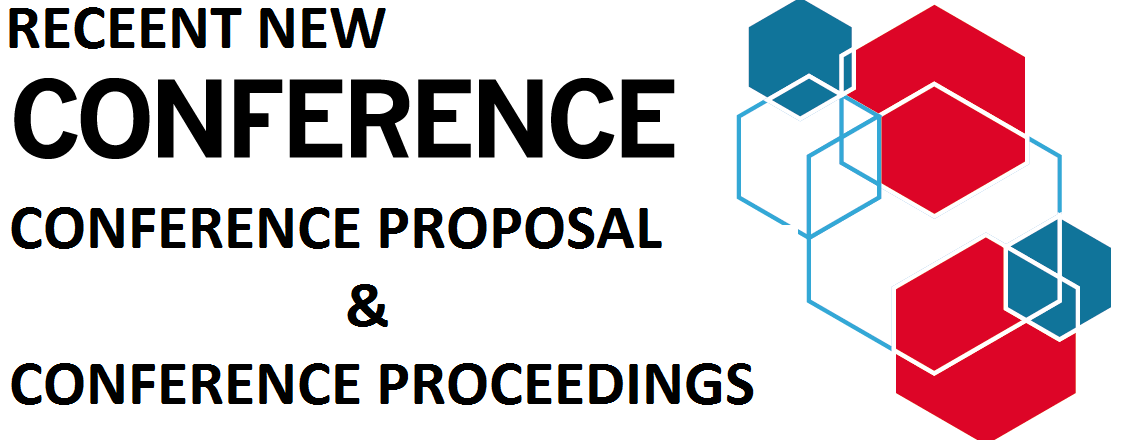
CONFERENCE PROPOSAL CONFERENCE PROCEEDINGS




